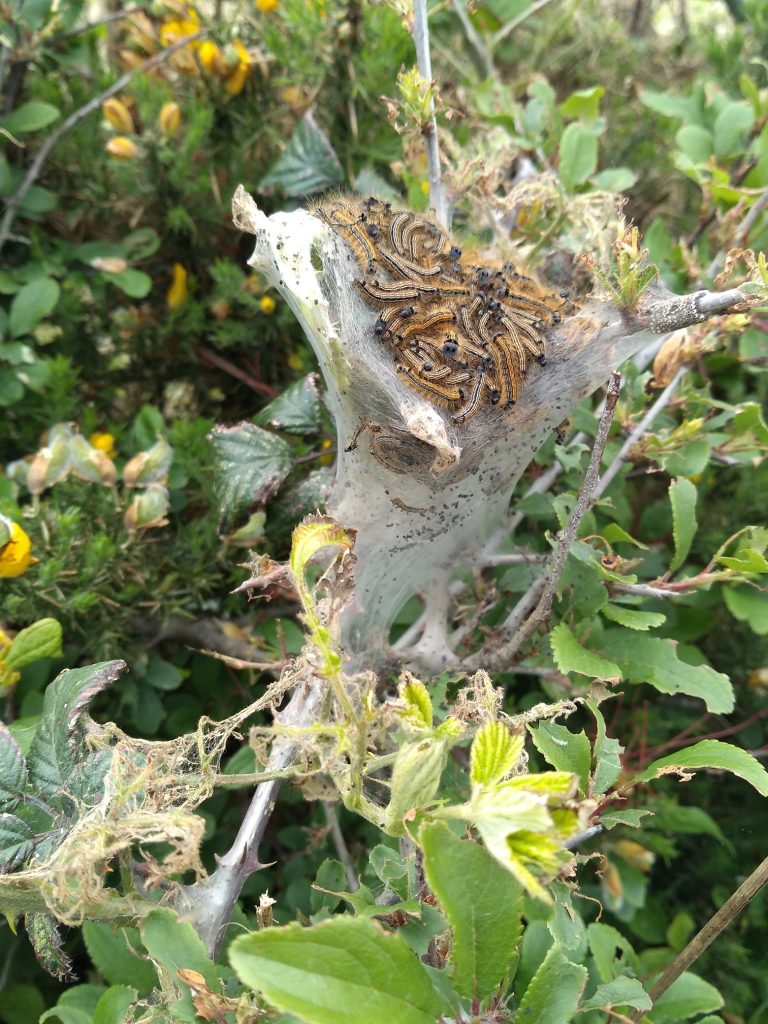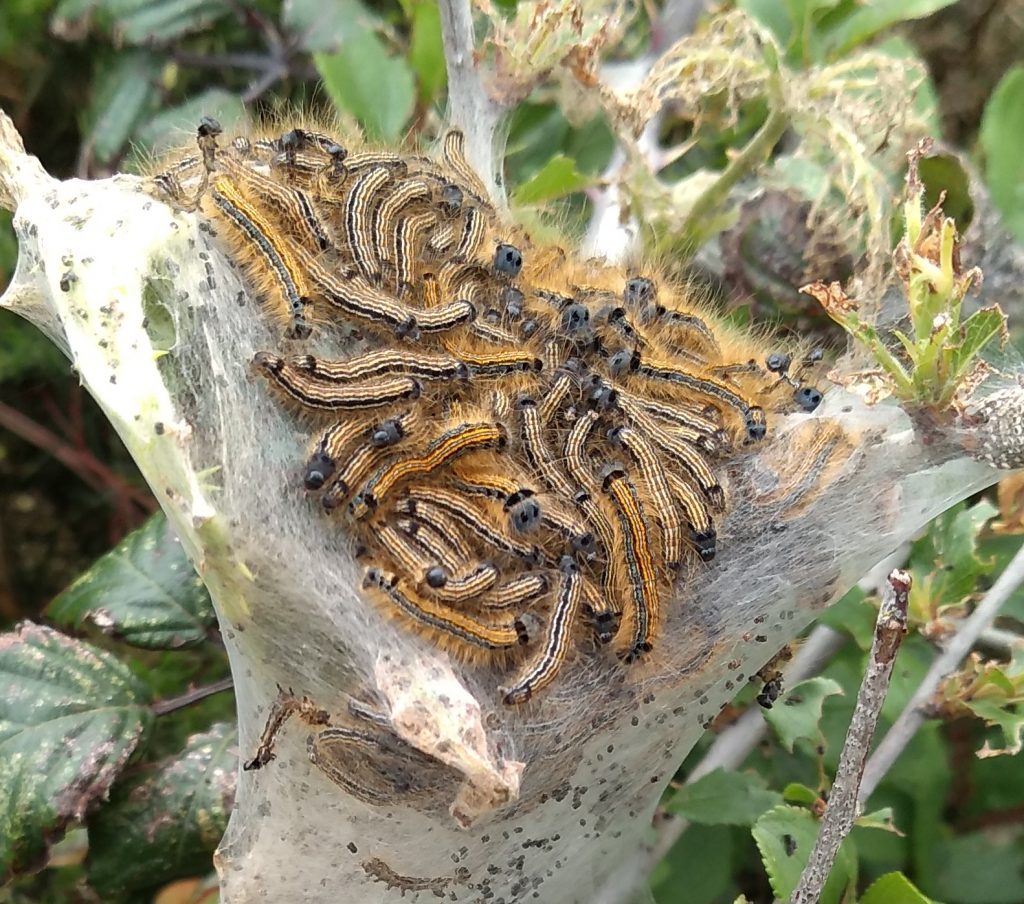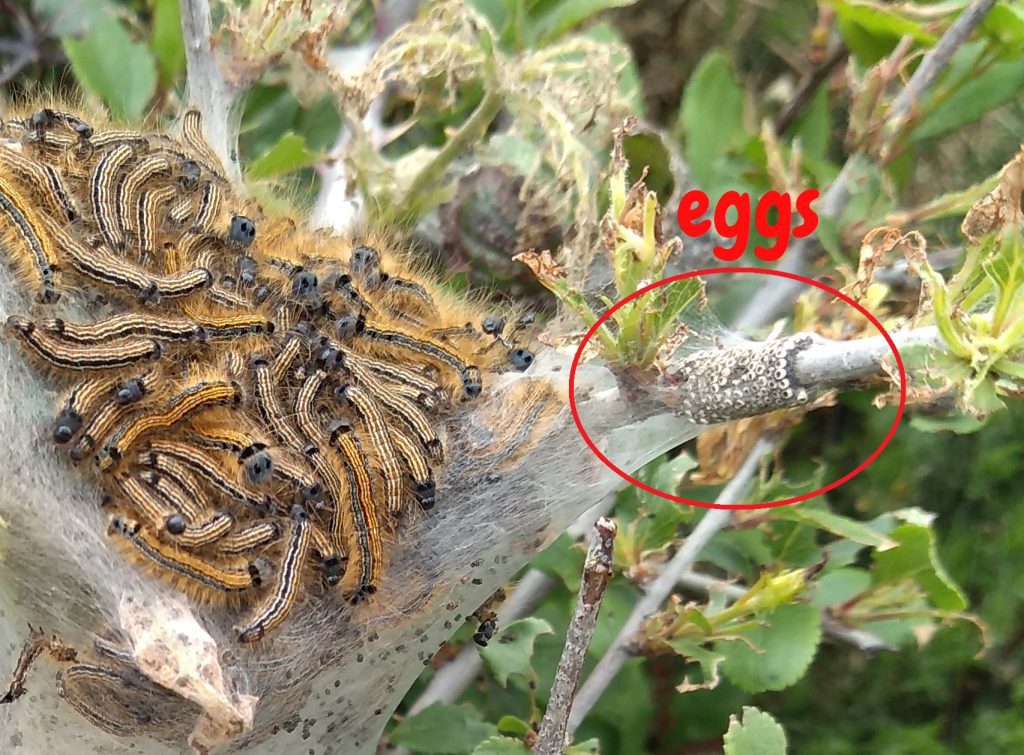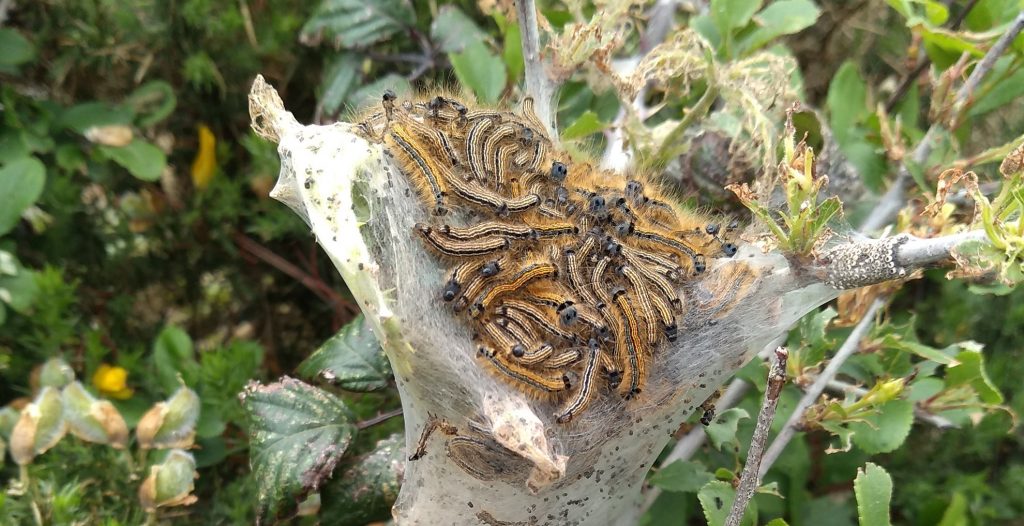Have you spotted dense webs on hedges and wondered what’s lurking inside? Ever wondered what spider was inside them because they don’t look mush more dense than a typical spider’s web? Possibly you’ve seen the webs with caterpillars wriggling in them?
Well, hese grubs are not an eight-legged creature’s lunch and that web was actually spun by those caterpillars.
We spot these webs, belonging to the Lackey Moth caterpillar, on our walks along the coast paths in North Devon. Read on to find out about these creatures, their weird webs, and crazy grown up moths!
The Lackey moth & caterpillar is common in the southern England, especially near the coast. Frequently found on blackthorn and hawthorn hedges, they can be seen sitting in their web if they have been left undisturbed, like the ones we photographed near Westward Ho!.


They grow to about 5cm and have blue, orange & white striped, hairy bodies. Their long hairs protect against predators and they will retreat into their web when in danger. From April to June, the caterpillars munch their way through the shrubs, spinning a silk web as they grow. When fully grown, they find a suitable place low to the ground hidden amongst plants to spin a cocoon and pupate. The adult moths emerge within a month, by July.
The moths are 2-3cm wide and are not as attractive as the caterpillars, being beige to brown in colour, with a furry body and large feathery antennae. To see the adult moths click here. The Lackey moth lays its eggs in neat rows on the stems of their favourite shrubs in late summer, you can see these on the right hand branch in the photos below.

The adult moths are strongly attracted to light and often fly indoors at night crashing straight into lightbulbs, and zoom around haphazardly, bumping into everything!
Other silk spinning caterpillars include the Brown Tail Moths & Ermine Moths. The web we found on our coast walk is very modest, there are plenty of reports of enormous webs created by the silk-spinning caterpillars, such as this entire tree covered in Yorkshire.
So if you come across dense webs in shrubs that look like this, do take a closer look……although I can’t guarantee what will be lurking inside!
Happy Science-ing
Ruth
Chief Scientist at Sciencedipity
Want easy science to do?
Head on over to our blog find out other cool experiments such as Glowing Fluorescent Liquid or the Super Easy 6 – a free download with 6 super-easy experiments to try at home! Our shop for made to order science kits, can be found here.

